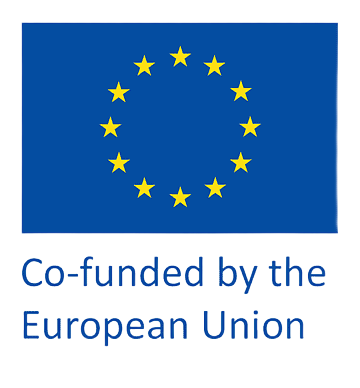
Hiring quickly and well is the difference between shipping features and falling behind. If you need to hire a software engineer who fits your product roadmap, culture, and timeline, this guide shows you how to make that happen without guessing. You’ll learn practical steps, hiring frameworks, and how to avoid the most costly mistakes. For a hands-on partner, check the Remoteplatz main page for tailored talent options and insights. By the end, you’ll be able to assess candidates with confidence, structure interviews that predict performance, and start building winning engineering teams.
Why a strategic approach matters when you hire a software engineer
First impressions and decisions scale. Bringing a single hire on board can multiply your team’s velocity or create long-term drag. When you decide to hire a software engineer, you’re not just filling a role — you’re investing in product delivery, architecture quality, and team dynamics. In this section you’ll learn why a strategic hiring process reduces risk, shortens ramp-up time, and keeps product timelines predictable.
Key benefits of a structured hiring process
- Predictable outcomes: clear job definitions and scorecards reduce bias and guesswork.
- Faster ramp: onboarding plans shorten time to impact.
- Retention: candidates who match company mission are more likely to stay.
Real-world example: a mid-size SaaS company we’ll call “MapleTech” adopted a four-stage hiring funnel and reduced time-to-productivity by 40% after hiring five engineers with targeted skills.
How to hire a software engineer: step-by-step roadmap
When you set out to hire a software engineer, follow a repeatable roadmap. This section outlines a step-by-step plan from defining the role through onboarding. Each step includes concrete actions you can implement immediately.
1. Clarify the role and outcomes (80–120 minutes)
Start by writing an outcomes-based job brief: list the primary responsibilities, measurable success criteria for the first 3, 6, and 12 months, and required versus nice-to-have skills. A clear brief helps you target the right candidates and speeds screening.
2. Create a practical scorecard
A scorecard turns subjective impressions into objective data. Include categories like problem solving, system design, code quality, communication, and cultural fit. Use the scorecard during interviews and calibrate across interviewers.
3. Choose sourcing channels
Balance passive and active sourcing: employee referrals, niche job boards, contractor-to-hire pipelines, and talent partners. If you want a partner, explore how Remoteplatz’s get-started page explains talent matching and remote onboarding.
4. Screen for signal, not noise
Start with a 20–30 minute screening call focused on outcomes and recent work. Ask candidates to describe a recent project, decisions they made, and trade-offs. If the evidence aligns with your scorecard, move to a focused technical evaluation.
Design interviews that predict real-world performance
An interview should be a simulation of work, not a trivia contest. When you hire a software engineer, design interview stages that reflect daily responsibilities: debugging, design discussions, code reading, and collaboration. This improves predictive validity and candidate experience.
Practical interview stages
- Screen call: cultural fit and high-level competence.
- Work-sample task: short, relevant challenge that takes 60–120 minutes.
- System design: whiteboard or collaborative doc for senior roles.
- Team pairing: 60-minute pairing session on a real bug or feature.
- Final culture interview: alignment on mission, workflow, and values.
Scoring and debriefs
After each stage, interviewers submit scores and brief notes tied to the scorecard. Hold a 30-minute debrief where you threshold accept/reject decisions based on evidence rather than intuition.
Practical hiring tactics: sourcing, screening, and offers
Turning interviews into offers is a tactical discipline. When you hire a software engineer, small operational choices — how you write the job ad, how quickly you follow up, and how you structure offers — determine success. This section gives you practical tactics that increase acceptance rates and reduce time-to-hire.
Writing job ads that attract the right candidates
Job ads should reflect actual work. Use outcome-based language, specify must-have skills, and include compensation range. Example opener: “Work on backend systems handling 200k daily requests; expect to own APIs and lead incident response.” Avoid long laundry lists of technologies.
Speed and personalization
Fast response times signal competence and respect. Aim to schedule technical interviews within 5 business days of screening. Personalize outreach and interview feedback — candidates recall clarity and candor.
Crafting offers that convert
Design offers with three clear components: base compensation, equity or bonus structure, and growth path. Include a personalized note describing the first 90 days and the impact you expect. This helps candidates visualize success and improves acceptance rates.
Onboarding and retention: turning hires into long-term contributors
Hiring doesn’t end when a candidate signs; onboarding determines whether your new engineer will thrive. To truly hire a software engineer successfully, create a 90-day plan that balances ramping, ownership, and relationship building.
90-day onboarding blueprint
- Week 1: infrastructure access, mentor pairing, and a simple bug fix to ship.
- Weeks 2–6: owned small feature, weekly check-ins, code reviews focused on learning.
- Months 2–3: independent project, cross-team demo, clear performance goals.
Retention levers
Levers include meaningful work, transparent career ladders, mentorship, and feedback loops. Regular 1:1s and measurable growth milestones keep engineers engaged and reduce churn.
Common hiring challenges and how to overcome them
When you attempt to hire a software engineer, you’ll face predictable obstacles: scarce senior talent, inflated salary expectations, and noisy resumes. This section presents playbooks for each pain point so you can move from frustration to solution quickly.
Challenge: Not enough senior candidates
Solution: Nearshore or remote senior hiring, contractor-to-hire pathways, and building senior growth internally. Partnering with talent platforms reduces sourcing time; check the Remoteplatz talent approach on their main page.
Challenge: Candidates ghosting late-stage offers
Solution: Improve communication cadence, share hiring timelines, and be transparent about competing offers. A short counter-offer window and a clear narrative about impact can reduce ghosting.
Challenge: Interview performance doesn’t predict on-the-job success
Solution: Replace algorithmic whiteboard puzzles with work-sample tasks and paid take-home assignments that mirror day-to-day work. Pairing sessions reveal collaboration skills in real-time.
Tools, templates, and a hiring playbook you can use today
To streamline how you hire a software engineer, use reusable templates: scorecards, interview scripts, offer letters, and onboarding checklists. Below is a compact playbook and a comparison table you can adapt immediately.
Free playbook checklist (adaptable)
- Define outcomes and scorecard
- Post job with clear compensation range
- Screen with focused 30-minute call
- Follow with a paid work sample
- Conduct pairing session and design interview
- Calibrate interviewers and debrief with scorecard
- Make an offer with a 90-day success plan
- Onboard using the 90-day blueprint
| Stage | Purpose | Action Items | Time Expectation |
|---|---|---|---|
| Role Definition | Align expectations | Write outcomes, update JD | 1–2 days |
| Sourcing | Find candidates | Post role, reach out, vendor screening | 1–3 weeks |
| Screening | Signal-check | 20–30 min call, scorecard | 1–3 days |
| Technical Evaluation | Predictive work assessment | Work-sample, pairing, design | 1–2 weeks |
| Offer & Onboarding | Convert and retain | Offer, 90-day plan, mentor | 3 months (onboarding) |
Case studies and metrics: what good hiring looks like
Seeing is believing. When you hire a software engineer with a structured process, outcomes improve measurably. Below are anonymized case summaries that illustrate what’s possible when hiring is systematic and outcome-driven.
Case: European fintech (anonymized)
Challenge: Slow product cycles and inconsistent code quality. Action: Rewrote the hiring scorecard, introduced paid work-samples, and partnered with a remote talent service. Outcome: Time-to-hire dropped by 30%, and two new hires reduced critical bug rate by 25% in the first quarter.
Case: Early-stage marketplace
Challenge: Need for rapid iteration. Action: Used contractor-to-hire model and pairing interviews. Outcome: Hired three engineers within eight weeks; released a major feature within three months.
Metrics to track for continuous improvement
Focus on a small set of hiring metrics to iterate quickly. When you consistently measure, you’ll get feedback that improves future cycles and helps you better hire a software engineer over time.
- Time-to-hire: days from posting to accepted offer.
- Time-to-productivity: weeks until first independent feature.
- Offer acceptance rate: percent of offers accepted.
- Quality of hire: first-year performance reviews mapped to scorecards.
Hiring remotely: best practices for distributed teams
Remote hiring widens your candidate pool, but requires deliberate processes. If you want to hire a software engineer who will thrive remotely, standardize asynchronous onboarding, invest in communication tooling, and create rituals that build trust across timezones.
Remote-specific playbook
- Document everything: onboarding guides, runbooks, and decision logs.
- Use pairing and recorded walkthroughs to onboard efficiently.
- Set overlapping hours and clear async expectations.
For teams starting remote hiring, the resources on Remoteplatz’s get-started page provide practical jumpstarts for remote talent and onboarding flows.
Wrap-up: your next 30 days plan to hire a software engineer
Executions wins. If you’re ready to hire a software engineer in the next month, follow this condensed 30-day checklist to keep momentum.
- Day 1–3: Define outcomes and publish job ad with range.
- Day 4–10: Source actively and screen first candidates.
- Day 11–20: Run technical evaluations and pair sessions.
- Day 21–25: Debrief and extend offers.
- Day 26–30: Prepare 90-day onboarding and mentor assignments.
Takeaway: a disciplined, evidence-based hiring process will help you hire the right engineer faster and keep them productive longer.
Frequently Asked Questions
How long does it typically take to hire a software engineer?
On average, a full process can take 4–8 weeks from posting to offer acceptance for mid-level roles. Senior roles often take longer due to deeper evaluations and multiple stakeholders. Speed up the timeline by predefining scorecards, using paid work-samples, and partnering with talent platforms that match candidates to your specific outcomes.
What should I include in a technical assessment?
Design assessments around daily work: a small project, a debugging task, or a pairing session. Aim for tasks that take 60–120 minutes and reflect real responsibilities. Include clear success criteria and compensate candidates for longer take-home tasks to respect their time and attract stronger talent.
Is it better to hire remote or local engineers?
Remote hiring expands your talent pool and can be faster and more cost-effective, but it requires strong documentation and async rituals. Local hires may ease real-time collaboration and occasional on-site work. Choose the model that matches your product cadence and culture, and set clear expectations regardless of location.
How do I evaluate culture fit without bias?
Use structured interviews focused on behaviors and outcomes, and avoid subjective questions. Create a cultural scorecard with observable indicators like communication style, feedback orientation, and ownership. Calibrate interviewers regularly to reduce bias and rely on multiple data points before making decisions.
When should I consider using a talent partner like Remoteplatz?
If you need to scale quickly, access specialized skills, or reduce hiring overhead, a talent partner can help. Partners speed sourcing, provide vetted candidates, and assist with onboarding. Review how partners integrate with your hiring workflow, expectations for timelines, and transition plans to full-time employment.
Hiring the right engineer requires clarity, consistency, and a bias toward practical evaluation. Use the frameworks above to define outcomes, design predictive interviews, and build onboarding that drives early impact.
Ready to hire your next engineering talent? Visit Get started with Remoteplatz to explore curated candidates, streamlined onboarding, and a hiring partner that helps you move faster and hire smarter.



